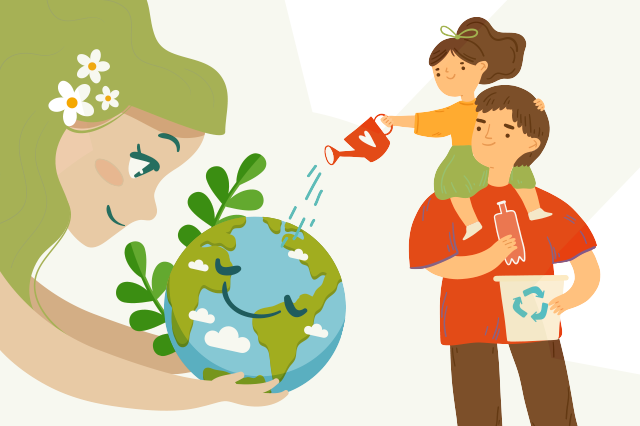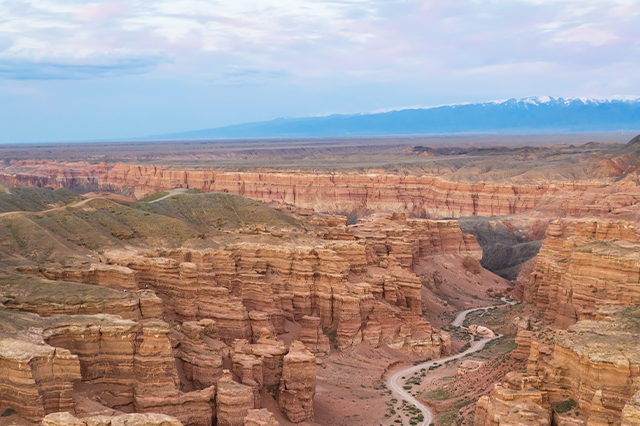As the world continues to face climate change, environmental degradation, and the depletion of natural resources, people need to take an active role in preserving the environment.
Eco-consciousness, also known as environmental awareness, refers to understanding the human environmental impact and taking steps to minimize negative consequences.
Becoming environmentally conscious may seem like an impossible task at first, but the point is to take small steps and develop good habits over time. Here are ten habits that newcomers can adopt to become more environmentally conscious:
Reduce, Reuse, Recycle. This classic mantra is still relevant today. By reducing the amount of waste you produce, reusing items instead of buying new ones, and recycling whenever possible, you will help conserve natural resources and reduce the amount of waste that ends up in landfills.
Bring reusable bags, containers, and water bottles instead of buying disposable ones. Choose glass jars instead of plastic containers for food storage.
According to the Environmental Protection Agency (EPA), recycling one ton of paper can save 26,000 liters of water, 3.7 cubic meters of landfill space, and 4,000-kilowatt hours of energy.
Save water. Water is a precious resource and it's important to conserve it wherever possible. Small changes in your routine can have a big impact on water conservation.
Close the faucet when you brush your teeth or shave. Install shower heads and low-flow faucets to reduce water use. Water your lawn and garden early in the morning or late in the evening to minimize evaporation.
The EPA estimates that the average American household can save 11,000 liters of water a year by installing water-saving fixtures and appliances.
Energy savings. Not only can you help the environment, but you can also save money on your utility bills by saving energy.
Switch to LED bulbs, which use less energy and last longer than traditional incandescent bulbs. Turn off lights and appliances when you're not using them. Use a programmable thermostat to regulate the temperature in your home more efficiently.
According to the U.S. Department of Energy, LED bulbs save up to 80% on energy costs and last up to 25 times longer than traditional incandescent bulbs.
Choose eco-friendly products. Many products on the market today are harmful to the environment. Choosing eco-friendly products can help reduce your carbon footprint and support sustainable manufacturing methods.
Look for products made from renewable or recycled materials. Choose cleaning products that are biodegradable and contain no harmful chemicals. Buy organic or local products to reduce the environmental impact of food transportation.
A study by the Environmental Working Group found that women who used conventional cleaning products had higher levels of chemicals in their bodies than women who used organic alternatives.
Buy used goods. Buying used items reduces the demand for new products and saves resources.
Buy clothing, furniture, and household items at thrift stores and garage sales. Consider renting or borrowing items you only need temporarily, such as tools or camping gear.
According to the Ellen MacArthur Foundation, the fashion industry produces 10 percent of global carbon emissions and is the second largest consumer of water in the world.
Use public transportation. Cars are a significant source of air pollution and greenhouse gas emissions. Using public transit, biking, and walking reduces your carbon footprint.
Take the bus or train to work or school. Practice carpooling with co-workers and friends. Use a bicycle or scooter for short trips around town.
According to the EPA, transportation accounts for 29% of U.S. greenhouse gas emissions.
Reduce meat consumption. The meat industry is a major contributor to greenhouse gas emissions and deforestation. Reducing your meat consumption or choosing eco-friendly meat options can have a significant impact on the environment.
Try to incorporate more plant-based foods into your diet. Choose grass-fed or pasture-raised meat products. Look for seafood options from sustainable sources.
According to a University of Michigan study, beef production generates 20 times more greenhouse gas emissions than bean production.
Plant a garden. Growing food can be a rewarding and sustainable activity that reduces your environmental impact.
Plant a vegetable garden in your backyard or on your balcony. Use compost and other natural fertilizers instead of synthetic ones. Plant native species to support local biodiversity.
A study by the University of Sheffield found that urban gardening reduces a household's carbon footprint by providing fresh, locally-grown produce.
Support eco-friendly businesses. Supporting businesses that prioritize sustainability promotes positive change.
Look for companies that use renewable energy, prioritize waste reduction, or have sustainable supply chains. When planning travel, choose eco-friendly hotels and travel options.
Educate others. If you share environmentally conscious habits and knowledge with others, it will help create a sustainable future.
Encourage friends and family to develop eco-friendly habits. Volunteer at local environmental organizations. Attend workshops and events to learn more about sustainability and combating climate change.
Becoming environmentally conscious is a journey that begins with small habits that help preserve the environment. The eco-hacks discussed in this article are easy to implement and reduce human impact on the environment. As more people adopt environmentally conscious habits, the world can move toward a more sustainable future.




















